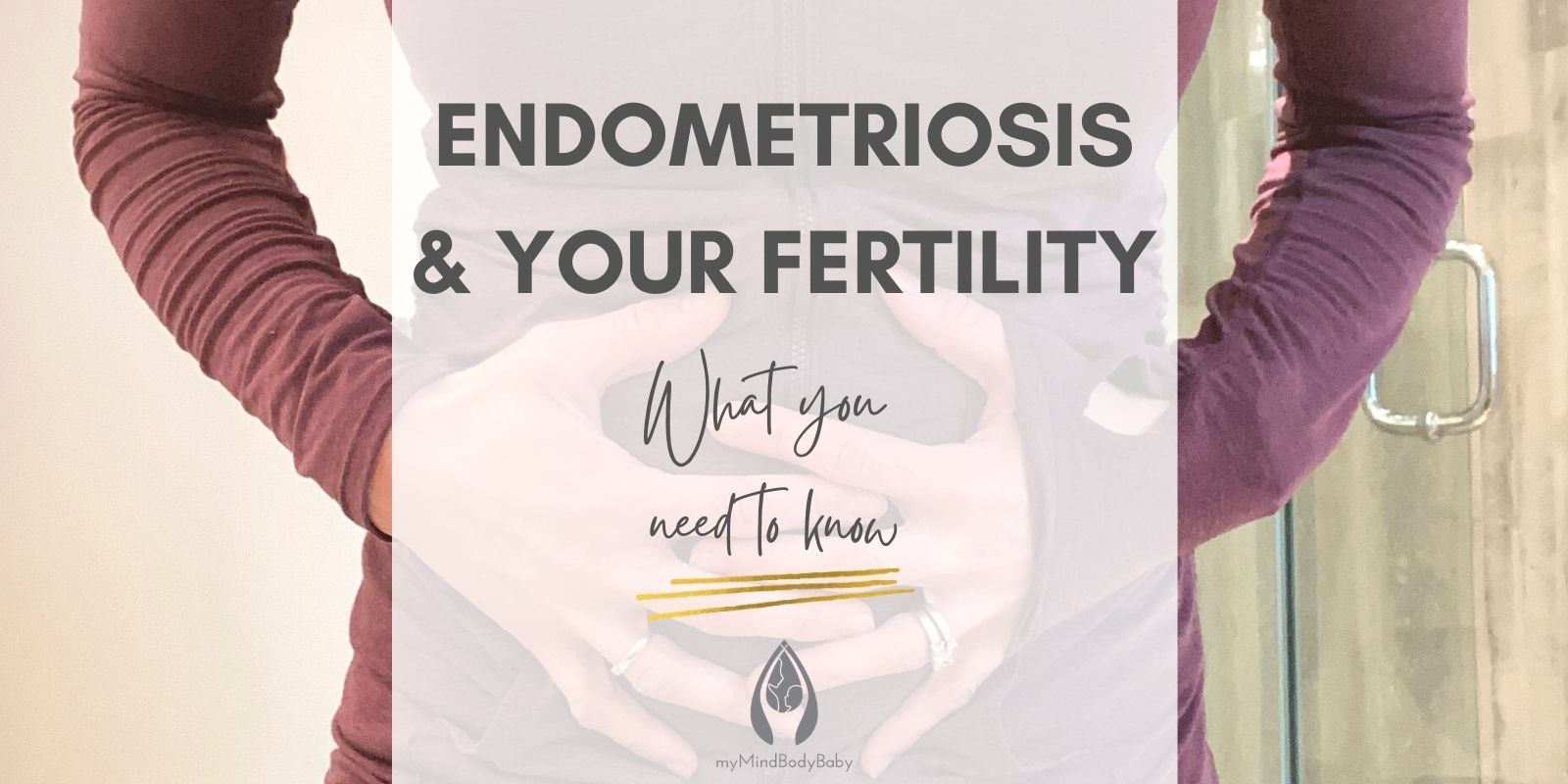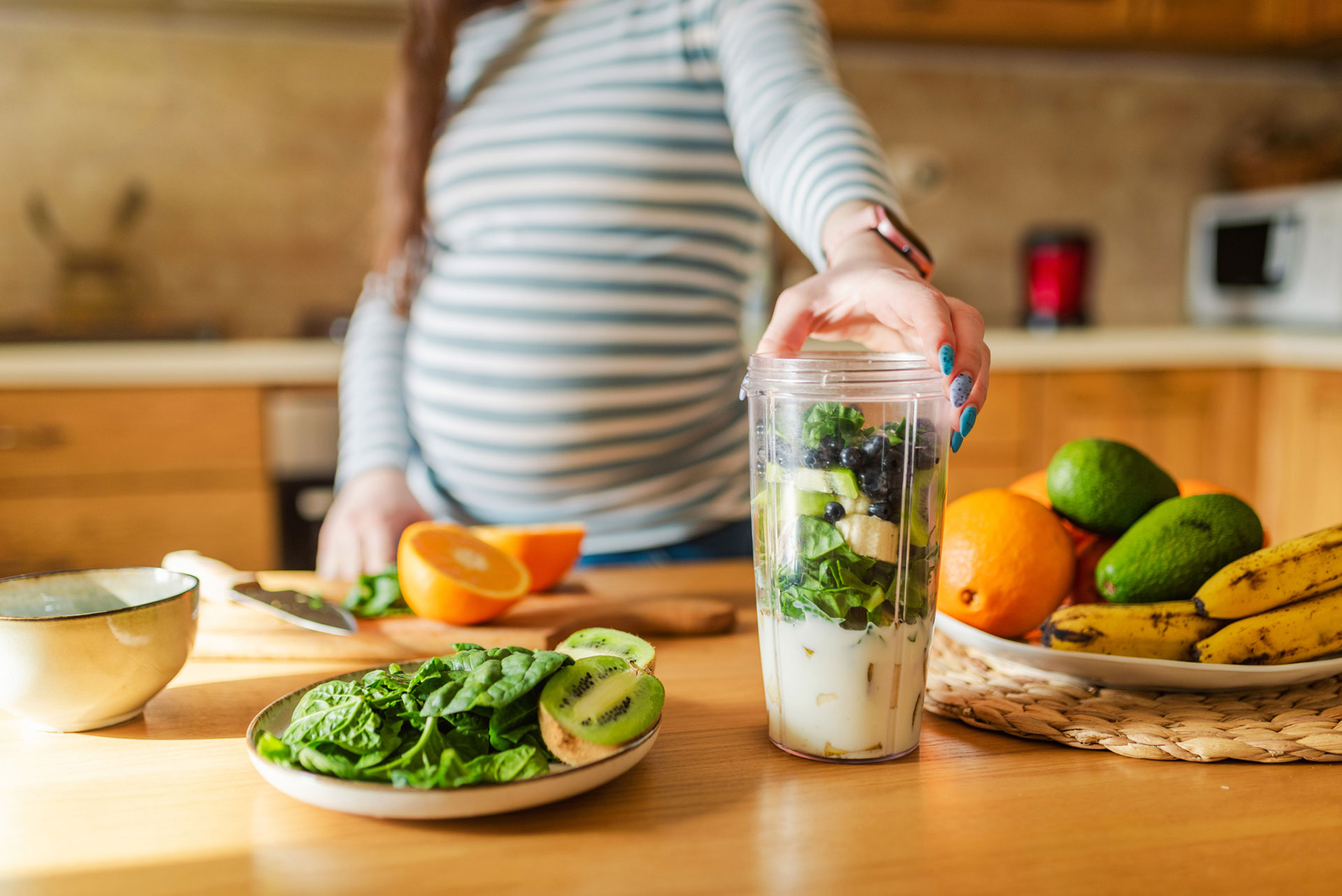“Endometriosis & Your Fertility” | myMindBodyBaby
Women are often first diagnosed with endometriosis when they begin to seek help for infertility. Until then they may have been suffering from the symptoms but thought they were just something they had to live with. It is estimated that up to 1 in 10 women suffer from endometriosis.
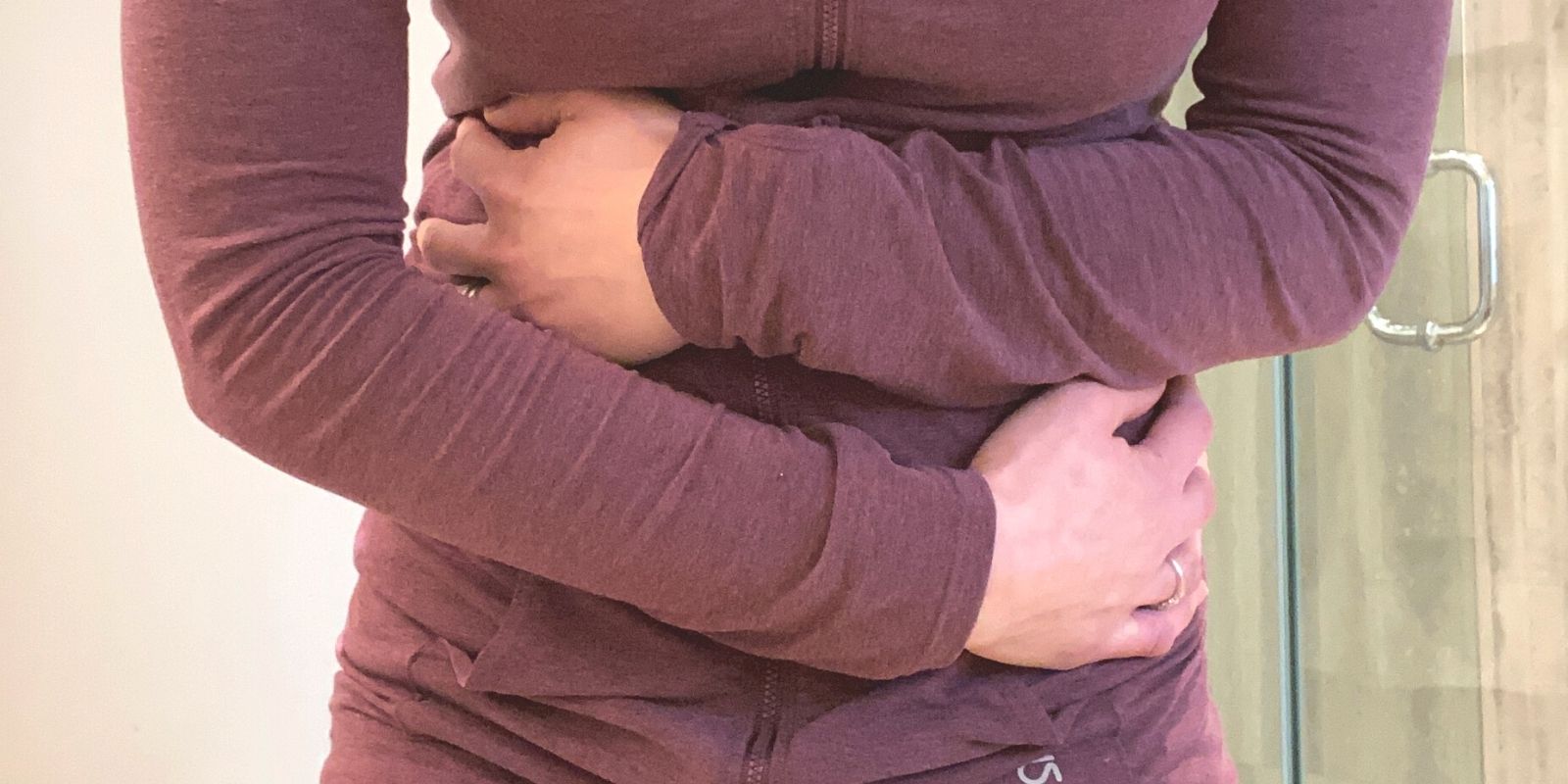
Symptoms can include:
- painful, heavy periods
- bleeding between periods
- pain during intercourse
- pain with bowel movements or urination, particularly during menstruation
- diarrhea, fatigue, nausea, bloating, or constipation, particularly during your period

What is endometriosis?
Each month, your uterus builds up your endometrial lining in preparation for a potential pregnancy. If pregnancy does not occur, the lining is shed (your period). In women with endometriosis, tissue similar to your uterine lining (endometrium) grows in areas that it shouldn’t, such as outside of the uterus. Common places to find evidence of endometriosis is in the ovaries, fallopian tubes, and pelvis. Research indicates that local reactions lead to the symptoms associated with endometriosis. This means that where there is endo tissue – the body will respond with its standard inflammatory response. Which is to release specific chemicals (including histamine, bradykinin, and prostaglandins) causing fluid to leak from the surrounding blood vessels, causing swelling.
What happens to this “misplaced tissue”?
Like your uterine lining, this tissue builds up each month and then your body attempts to shed it (for more on what happens in your body each month read this article). But unlike your uterine lining, which dispels out of your uterus during menstruation – this tissue has nowhere to go. This can lead to painful cysts and irritation – and eventually, scar tissue and adhesions.
What are the different stages?
The severity of endometriosis is usually based on a scale developed by the American Society of Reproductive Medicine which assigns points based on how far the endometrial tissue has spread, what areas of the body are impacted, and the depth of the tissue. There are four stages:
Stage 1
Also called “minimal. There are a few lesions, little or no scarring – and affected tissue is found in your abdomen or pelvis.
Stage 2
Also called “minor”. More lesions than stage 1, there may be scarring and the tissue may be found deeper.
Stage 3
Also called “moderate”. There is scarring in the form of thick bands (also called adhesions), cysts are possible on ovaries, and the impacted tissue is found deeper.
Stage 4
Also called “severe”. There are deep lesions, scarring, and cysts on one or both ovaries.
How does this impact my fertility?
Roughly 30% – 50% of women with endometriosis have difficulty conceiving. For pregnancy to occur, an egg needs to be released from the ovary, be fertilized by sperm, travel through the fallopian tube, and implant in the uterus (for more on what it takes for implantation to occur read here). If the “misplaced” tissue or resulting scar tissue from endometriosis blocks or impacts any of these structures (ovaries, fallopian tubes, uterus) it may prevent pregnancy from occurring. Even without this errant tissue in any of these structures, it appears fertility can still be impacted in such ways as damage to the sperm or egg.
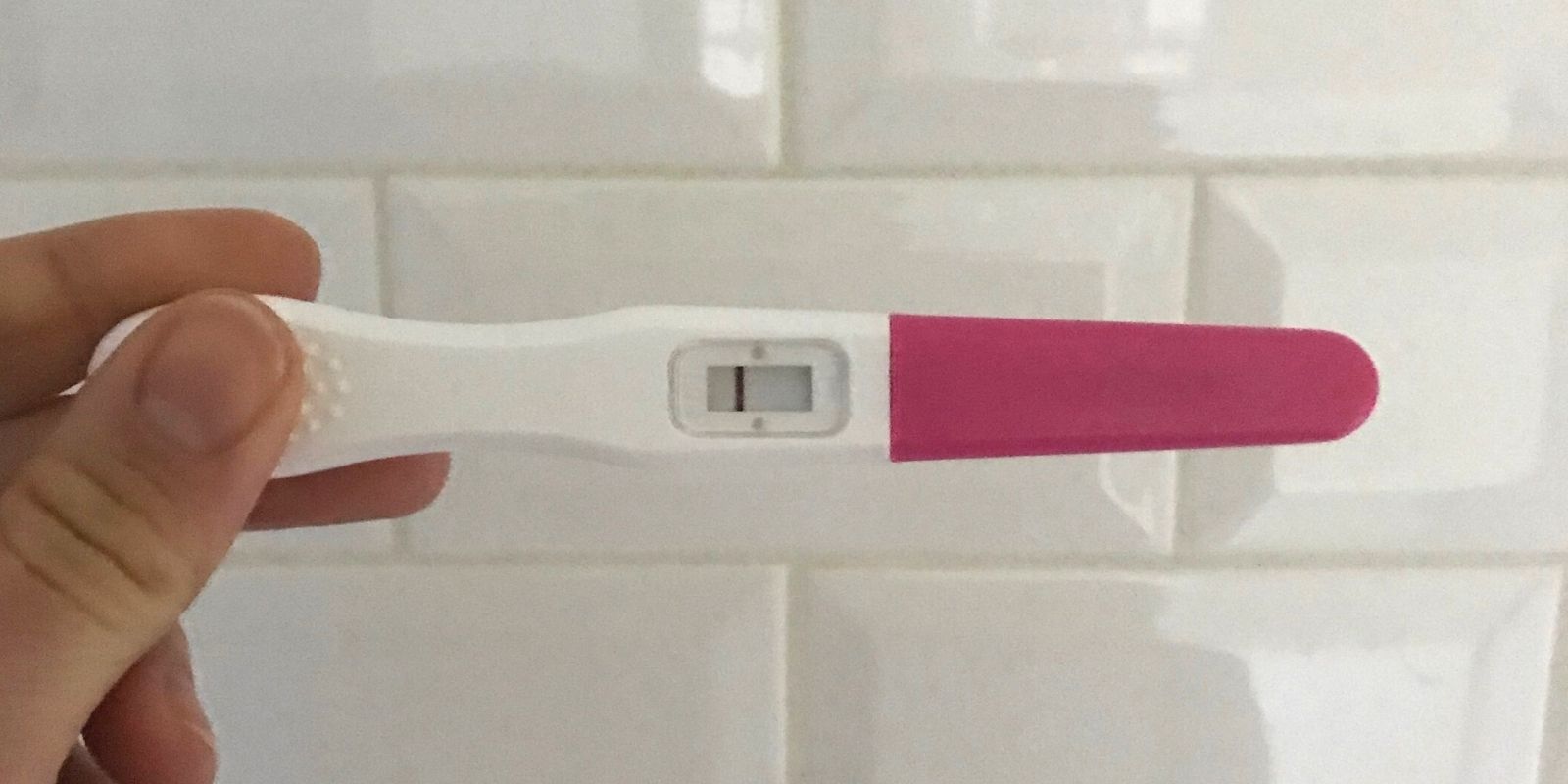
What are the risk factors for developing endometriosis?
There are a number of different risk factors that can place you at higher risk for developing endometriosis, including:
- Genetics: if you have endometriosis in your family you have a higher risk of developing it yourself
- Low BMI: women with low body mass index are at higher risk
- Early mensus: if you were younger than average when you started your periods
- Pregnancy and birth: never having given birth puts you at a higher risk
- High estrogen: high levels of estrogen put you at greater risk
- Short cycles: women with shorter menstrual cycles (less than 27 days) are at higher risk
- Heavy periods: long (over a week), heavy periods
- Physical abnormality: physical obstructions or a medical condition that prevents your normal uterine lining from exiting your body
- Reproductive tract issues: physical issues involving your reproductive tract may place you at higher risk
Are there blood tests to detect endometriosis?
There are certain blood tests, outside of the standard blood panel, you could discuss with your doctor if there is a suspicion of endometriosis.
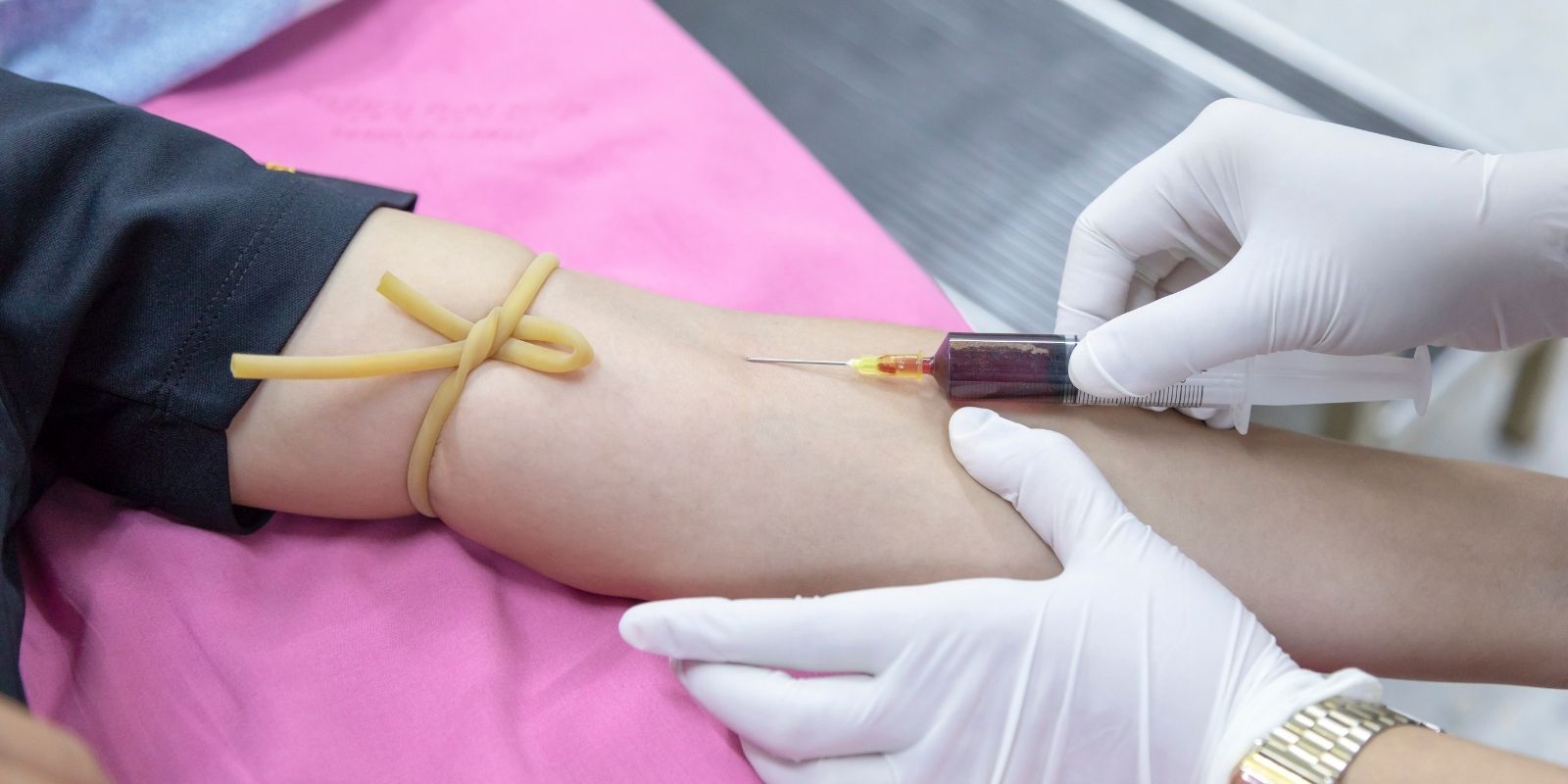
- Diurnal Cortisol: This is a saliva test that measures cortisol levels several times throughout the day. Since endometriosis symptoms like infertility, mood, fatigue, cravings, and pain are all affected by cortisol, it is important to understand the role stress is playing in individuals.
- B12: Often prolonged and or heavy bleeding is associated with endometriosis which can lead to low iron and b12. Gut imbalances are often present in patients with endometriosis (ie. bloating) and b12 manufactured in gut. If this number is abnormal it can provide a clue that endometriosis might be present.
- Ferritin: Due to heavy or prolonged bleeding, ferritin levels may be low potentially providing another clue.
- Celiac Test: Endometriosis and autoimmune conditions like celiac and often associated with one another. If you have celiac disease this might prompt further investigation into endometriosis. Plus, removing gluten if you are celiac will help reduce or eliminate many symptoms.
- C-Reactive Protein (CRP): Is an inflammatory marker in the blood. Since inflammation processes play an important role in the development and progression of endo, knowing your CRP value is important.
- Vitamin D: Low vitamin D seems to be connected to endometriosis in terms of onset and severity.
- Thyroid Panel (TSH, Free T3, Free T4, TPO Antibodies, Reverse T3): Studies suggest that thyroid hormones may affect the severity and pain of endometriosis. If the thyroid is not functioning optimally, this could lead to greater advancement and increased symptoms associated with endometriosis.
How do you manage endometriosis?
While there is no cure for endometriosis there are options to help reduce the symptoms. Endometriosis is an “estrogen-dependent chronic gynecologic disorder”. Efforts to manage estrogen and reduce inflammation can help manage the symptoms. Hormone therapy or surgery are options, however, if you are trying to conceive these may not be appropriate.
44]
Diet and Endometriosis
Lack of proper nutrition can play a role in many chronic diseases. While research on endometriosis and diet is ongoing, some key findings have emerged.
Meat Consumption
Research by Yamamoto et al looked at endometriosis risk and meat vs. fish consumption. This study showed that high levels of animal meat intake (2 or more servings a day) were associated with a higher risk of endometriosis. Replacing some servings of animal meat with fish or non-meat options may help reduce the symptoms of endometriosis.
Estrogen Lowering Foods
Foods that help metabolize and lower excess estrogen such as cruciferous vegetables (broccoli, cauliflower, and chard) and high fiber options like nuts, seeds, and berries can help reduce endometriosis symptoms.
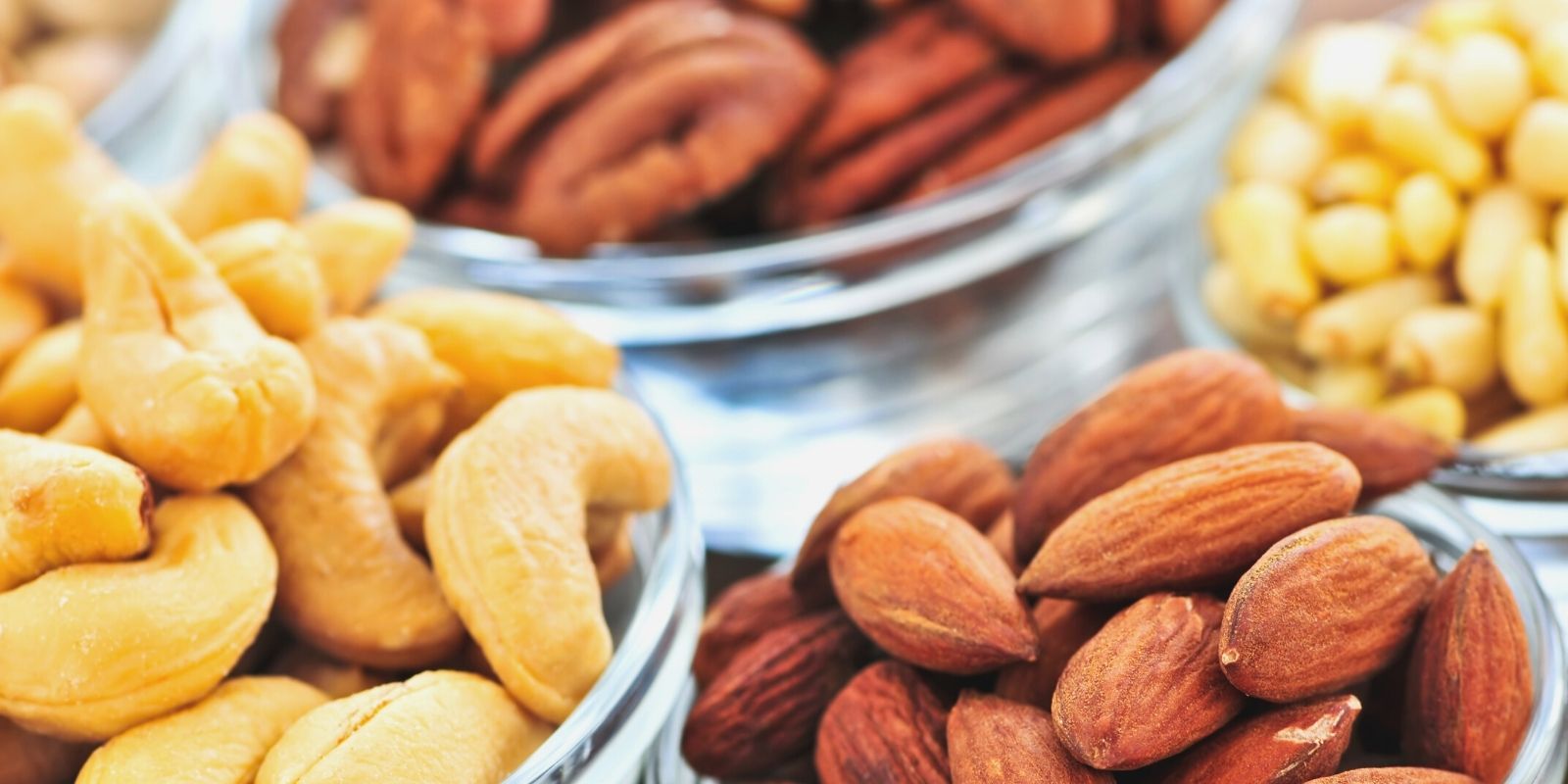
Conversely, any food that creates an imbalance in estrogen has the potential to aggravate symptoms. This includes any highly processed items like white sugars and flours, but also foods that are inflammatory and hard to digest. Examples include gluten, dairy, soy, caffeine, and any foods that YOU know to irritate you (everyone is different).
Overall, if you are constantly consuming foods that are inflammatory, irritating, hard to digest, and or have a negative impact on hormones, you are more likely to exacerbate your endometriosis symptoms.
Exercise and Endometriosis
Cytokines are little messengers in your body. They are proteins that are released from one cell to give a message to another. Exercise increases the kind of cytokines that have anti-inflammatory and antioxidant properties and also helps in reducing estrogen levels (see here for review). Researchers believe that working out, and the associated release of these special cytokines, is beneficial in helping provide a protective effect against inflammatory conditions, like endometriosis. In one animal model study, exercise helped reduce endometriotic lesions as well as had a beneficial impact on other biomarker levels. The conclusion? “the practice of physical exercise could be beneficial, at least in part, for the treatment of endometriosis.” While more research on this subject is necessary, women with endometriosis who partake in regular exercise find they are better able to manage their symptoms. Exercise is also beneficial in helping support your fertility – for more on exercise and fertility check out this article.
What types of exercise?
The pain associated with endometriosis can cause women to tense certain muscles in response to the discomfort. As a result, women who suffer often find their hip flexors, abdominal wall and pelvic floor impacted. Most women find low-impact options the most sustainable, particularly when first starting to incorporate exercise into their regime.

Even just starting out with a 15-minute walk per day can be beneficial. It can help increase mood-boosting endorphins, reduce stress hormones, and help reduce inflammation. Ending your walk with a good stretch session can help to lengthen and relax the muscles you hold tight in response to your endometriosis pain. Here is another great endo-friendly beginner workout you can try:
Putting it all together
In summary, while endometriosis is usually a life-long condition you may find the symptoms better or worse at different stages of your life and your menstrual cycle. Medical treatments are available; however, some may not be conducive to your goals of TTC – if that is where you are at. Lifestyle modifications – like nutrition and exercise – can be used to both support your fertility, as well as help, manage your symptoms.
Here to support you
We have a number of different guided fitness & nutrition programs to support you on your journey to growing your family.
19]
Preconception
If you are preparing to start trying to conceive our 12 Week Preconception Fitness & Nutrition Guide is a great option. It will provide you with a 12-week anti-inflammatory meal plan packed with delicious, super-easy-to-prepare meals that are endo-friendly. It also delivers a 12-week exercise plan, ideal for all exercise levels. The program provides different options and modifications for those just starting out – or intensity-boosters for those that need them.
Fertility Treatments
If you are at a fertility clinic preparing for a fertility treatment we have a 4-week Treatment Prep + Cycle Monitoring Fitness and Nutrition Guide. This program helps you to prepare your body and mind for upcoming fertility treatments. It delivers 4 weeks of meal plans and recipes, a grocery list, and a nutritional diary to help keep you accountable. The workout schedule is easy to follow and provides full-length exercise videos to keep you motivated and energized.
If you are planning an IVF or IUI cycle we have individual plans specifically designed to help guide you through that treatment cycle. Each treatment guide has day-by-day meals, exercises, and mindfulness programs to support you as you proceed through your treatment.

